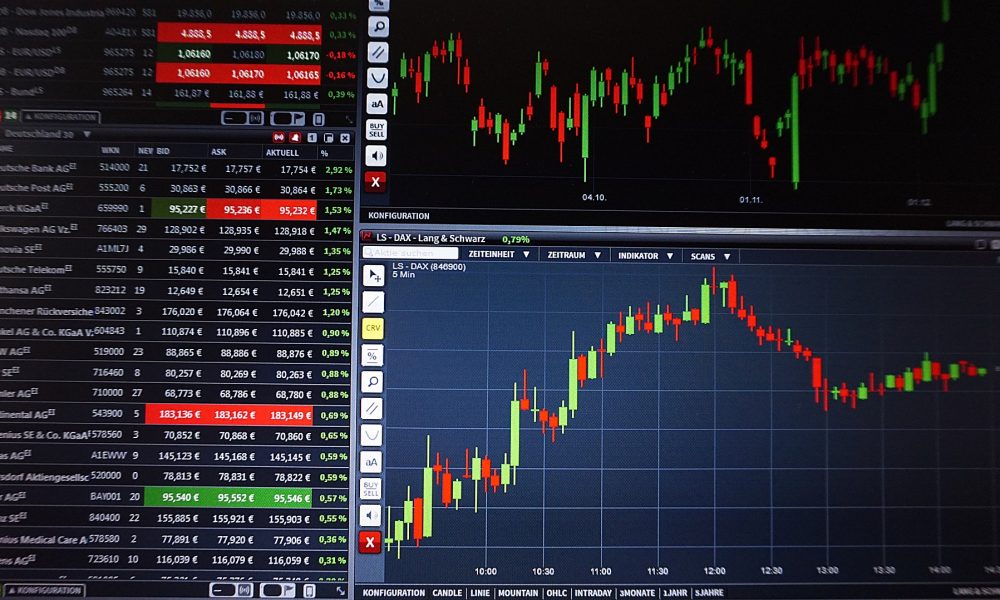Investment Strategies for Volatile Markets: Tips for Australian Investors

Market volatility can be unsettling for investors, but it also presents opportunities for those who are prepared. Understanding how to navigate and thrive in such conditions is crucial for long-term success.
Understanding Market Volatility
Market volatility refers to the frequency and magnitude of price movements in the financial markets. It is often caused by economic indicators, geopolitical events, changes in interest rates, and shifts in market sentiment. Events like the global financial crisis of 2008, the COVID-19 pandemic, and political upheavals can trigger significant market volatility. While volatility can be daunting, it is a normal aspect of investing and can create opportunities for astute investors.
The Impact of Volatility on Investments
Volatility can significantly affect portfolio value, sometimes leading to substantial short-term losses. It can also have a psychological impact, causing anxiety and leading to impulsive decisions. However, maintaining a long-term perspective is essential. Historically, markets have recovered from downturns, rewarding those who stay invested. For instance, after the 2008 financial crisis, markets eventually rebounded, leading to substantial gains for those who held their investments.
Strategies for Managing Volatility
Diversification involves spreading investments across different asset classes, sectors, and geographies to reduce risk. By not putting all your eggs in one basket, you can mitigate the impact of a downturn in any single investment. For example, combining stocks, bonds, real estate, and commodities in your portfolio can provide balance and stability. In Australia, this might mean investing in a mix of ASX-listed stocks, international equities, government and corporate bonds, and physical assets like real estate and gold.
Asset Allocation
Strategic asset allocation involves modifying your investment portfolio to suit your risk tolerance and investment time frame. Younger investors often lean towards holding more equities to capitalize on growth potential, whereas those closer to retirement may prioritize bonds for greater stability. It’s crucial to periodically rebalance your portfolio to keep it in line with your financial objectives and risk appetite. For example, if market fluctuations have caused your equity holdings to swell, you might consider selling some stocks and purchasing bonds to realign your portfolio with your target allocation.
Dollar-Cost Averaging
Dollar-cost averaging involves investing a fixed amount regularly, regardless of market conditions. This strategy can lower the average cost of investments over time and reduce the impact of volatility. By committing to consistent investing, you avoid the pitfalls of trying to time the market, which is notoriously difficult. For example, investing $500 each month in an index fund will buy more shares when prices are low and fewer shares when prices are high, averaging out the cost over time.
Investing in Quality Assets
Focusing on high-quality, fundamentally strong assets is crucial during volatile times. Quality investments typically include companies with solid balance sheets, consistent earnings, and competitive advantages. In the Australian market, this might mean looking at blue-chip stocks or investment-grade bonds. For example, companies like BHP, Commonwealth Bank, and CSL have demonstrated resilience and strong performance over the years, making them potential candidates for a quality-focused portfolio.
Hedging Strategies
Hedging involves using financial instruments to protect against potential losses. Options and futures are common hedging tools that can mitigate risk. For example, buying put options on a stock you own can provide downside protection if the stock price falls. Hedging requires understanding and skill, so it’s advisable to consult with a financial advisor. Another approach could be investing in inverse ETFs, which gain value when the market declines, offering a buffer against market downturns.
Maintaining Liquidity
Having liquid assets ensures you can access cash when needed without selling investments at a loss. Liquid investments include cash, money market funds, and short-term bonds. Maintaining liquidity provides flexibility and helps manage financial emergencies without disrupting your long-term investment strategy. For instance, having an emergency fund equivalent to 3-6 months of living expenses in a high-yield savings account can provide peace of mind during volatile periods.
Utilizing Professional Advice
Professional financial advisors can provide valuable guidance, especially during volatile times. They can help you develop a sound investment strategy, adjust your portfolio as needed, and avoid emotional decision-making. Choose a reputable advisor with experience in managing volatility and a solid understanding of the Australian market. They can also help you navigate complex financial instruments like options and futures for hedging purposes.
Leveraging Investment Platforms and Tools
Modern investment platforms offer tools and resources that can help manage investments during volatility. Platforms like Saxo Bank provide comprehensive market analysis, portfolio tracking, and risk management tools. These features can help investors make informed decisions and stay on top of their investments. Look for platforms that offer educational resources, such as webinars and market insights, to enhance your investment knowledge.
Conclusion
Navigating volatile markets requires a combination of strategic planning, disciplined investing, and emotional resilience. By diversifying your portfolio, adjusting asset allocation, investing in quality assets, and maintaining liquidity, you can manage the risks associated with market volatility. Staying informed, setting realistic expectations, and having a contingency plan further bolster your investment strategy. Leveraging professional advice and modern investment platforms can provide additional support, ensuring you stay on track to achieve your long-term financial goals. Remember, volatility is a natural part of investing, and with the right strategies, you can turn it into an opportunity for growth and success.



